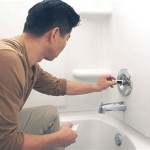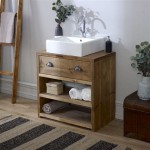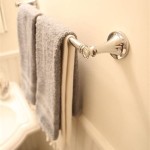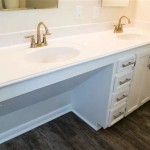Cleaning Mold From Bathroom Walls With Vinegar
Bathrooms, by their very nature, are havens for moisture. Showers, baths, and sinks generate humidity, creating an environment conducive to mold growth. Mold not only disfigures bathroom surfaces but also poses potential health risks, particularly respiratory issues and allergic reactions. Addressing mold promptly and effectively is crucial for maintaining a healthy and aesthetically pleasing bathroom. While numerous commercial mold cleaners are available, vinegar offers a natural and readily accessible alternative. This article provides a comprehensive guide to cleaning mold from bathroom walls using vinegar, detailing the process, safety precautions, and preventative measures.
Vinegar's effectiveness as a mold cleaner stems from its acetic acid content. Acetic acid is a mild acid that disrupts the cellular structure of mold, inhibiting its growth and reproduction. While vinegar may not be as potent as bleach or other specialized mold killers, it is generally considered a safer and less harsh option, especially for individuals sensitive to strong chemicals. Furthermore, vinegar is a cost-effective and readily available household cleaning agent.
Identifying Mold Types and Understanding the Risks
Before embarking on the cleaning process, it is essential to understand the type of mold present and the associated risks. Mold comes in various forms, with different colors and textures. While some molds are relatively harmless, others can be toxic and pose significant health hazards. Common bathroom molds include Cladosporium, Aspergillus, and Penicillium. Black mold, or Stachybotrys chartarum, is particularly concerning due to its potential to produce mycotoxins, which can cause severe health problems.
Although vinegar can effectively kill many types of mold, it is crucial to exercise caution when dealing with extensive or suspected toxic mold infestations. Large areas of mold growth, especially black mold, may require professional remediation. Attempting to clean large areas of toxic mold without proper protective equipment and ventilation can expose individuals to harmful mycotoxins. Individuals with pre-existing respiratory conditions, allergies, or compromised immune systems should be particularly cautious when dealing with mold.
It is advisable to consult a professional mold inspector or remediator if the mold infestation covers a large area (greater than 10 square feet), if the mold is suspected to be toxic, or if individuals experience adverse health effects after exposure to mold. Professional remediation involves specialized techniques and equipment to safely remove mold and prevent its recurrence.
Preparing for Mold Removal: Safety Precautions and Equipment
Prior to commencing the mold cleaning process, it is imperative to take necessary safety precautions to protect oneself from potential health risks. Mold spores can become airborne during cleaning, increasing the risk of inhalation and skin contact. The following safety measures should be observed:
Ventilation: Ensure proper ventilation by opening windows and doors to allow fresh air to circulate. A portable fan can also be used to enhance airflow and reduce the concentration of airborne mold spores.
Protective Gear: Wear appropriate protective gear to minimize exposure to mold. This includes a respirator or N-95 mask to prevent inhalation of mold spores, gloves to protect the skin, and eye protection to prevent mold from entering the eyes. Old clothes should be worn, as they may become contaminated during the cleaning process.
Containment: If the mold infestation is localized, consider using plastic sheeting to seal off the affected area from the rest of the bathroom. This will help prevent the spread of mold spores to other areas of the house.
In addition to safety gear, the following equipment will be needed for cleaning mold with vinegar:
White Vinegar: Distilled white vinegar is the preferred type of vinegar for mold removal due to its acidity and availability.
Spray Bottle: A clean spray bottle is needed to apply the vinegar solution to the mold-affected surfaces.
Scrub Brush or Sponge: A scrub brush or sponge is used to agitate the mold and loosen it from the surface. A non-abrasive scrub brush is recommended to avoid damaging the bathroom walls.
Clean Cloths or Paper Towels: Clean cloths or paper towels are needed to wipe away the vinegar solution and remove the loosened mold.
Bucket of Clean Water: A bucket of clean water is used for rinsing the cleaned surfaces.
The Mold Cleaning Process: Step-by-Step Instructions
Once the necessary safety precautions have been taken and the required equipment has been assembled, the mold cleaning process can begin. The following step-by-step instructions provide a comprehensive guide to cleaning mold from bathroom walls with vinegar:
Step 1: Prepare the Vinegar Solution: Pour undiluted white vinegar into a clean spray bottle. Diluting the vinegar with water may reduce its effectiveness in killing mold. Some sources suggest adding a few drops of tea tree oil to the vinegar solution for enhanced antifungal properties. While tea tree oil possesses antimicrobial properties, its effectiveness in mold removal is not extensively studied, and it is not a substitute for proper ventilation and safety precautions.
Step 2: Apply the Vinegar Solution: Thoroughly spray the mold-affected areas of the bathroom walls with the vinegar solution. Ensure that the mold is completely saturated with vinegar. Allow the vinegar to sit on the mold for at least one hour. This allows the acetic acid in the vinegar to penetrate the mold and kill it. For stubborn mold stains, allow the vinegar to sit for several hours or even overnight.
Step 3: Scrub the Mold: After the vinegar has had sufficient time to sit, use a scrub brush or sponge to vigorously scrub the mold-affected areas. Apply moderate pressure to loosen the mold from the surface. Pay particular attention to areas with heavy mold growth. If the mold is difficult to remove, reapply the vinegar solution and allow it to sit for an additional period of time before scrubbing.
Step 4: Rinse the Walls: After scrubbing, rinse the walls with clean water to remove any remaining vinegar residue and loosened mold. Use a clean cloth or sponge to wipe down the walls, ensuring that all traces of vinegar and mold are removed. It is important to thoroughly rinse the walls to prevent the vinegar from damaging the paint or other wall coverings.
Step 5: Dry the Walls: After rinsing, dry the walls thoroughly with clean cloths or paper towels. Moisture promotes mold growth, so it is essential to ensure that the walls are completely dry. A dehumidifier can also be used to help remove excess moisture from the bathroom.
Step 6: Repeat if Necessary: For stubborn mold stains or heavy mold growth, it may be necessary to repeat the cleaning process. Reapply the vinegar solution, allow it to sit, scrub, rinse, and dry the walls again. Multiple applications may be required to completely remove the mold.
Preventative Measures: Minimizing Mold Growth in Bathrooms
Preventing mold growth is often more effective than trying to remove it after it has already established itself. Implementing preventative measures can significantly reduce the likelihood of mold developing in bathrooms. The following strategies can help minimize mold growth:
Ventilation: Proper ventilation is paramount in preventing mold growth. Ensure that the bathroom is adequately ventilated by opening windows and doors during and after showers or baths. Install and use an exhaust fan to remove excess moisture from the air. The exhaust fan should be run for at least 20 minutes after showering or bathing.
Reduce Humidity: Minimize humidity levels in the bathroom by addressing leaks and drips promptly. Repair leaky faucets, showerheads, and toilets to prevent water from accumulating and creating a breeding ground for mold. A dehumidifier can also be used to reduce humidity levels, particularly in bathrooms with poor ventilation.
Regular Cleaning: Clean bathroom surfaces regularly to remove dirt, grime, and soap scum, which can provide nutrients for mold growth. Pay particular attention to areas that are prone to moisture, such as shower walls, tiles, and grout. Use a mold-resistant cleaning solution or a mixture of vinegar and water to clean these surfaces.
Proper Drying: After showering or bathing, wipe down shower walls, tiles, and floors to remove excess moisture. Use a squeegee to remove water from shower doors and walls. Hang towels and bath mats to dry properly. Regularly launder towels and bath mats to prevent mold growth.
Mold-Resistant Products: Consider using mold-resistant paint, grout, and caulk in the bathroom. These products contain additives that inhibit mold growth. When replacing grout or caulk, opt for mold-resistant formulations.
Inspect Regularly: Regularly inspect the bathroom for signs of mold growth. Pay attention to areas that are prone to moisture, such as corners, ceilings, and around fixtures. If mold is detected, address it promptly using the cleaning method described above.

How To Kill Mold With Vinegar 14 Steps Pictures Wikihow

How To Use Vinegar Keep Mildew From Coming Back Bathroom Cleaning More

Kill Bathroom Mould Without Bleach Electrodry Blogs

How To Remove Black Mould Using Vinegar The Natural Remedy That Won T Damage Your Home Express Co

How To Remove And Kill Mold Bleach Vs Vinegar

How To Kill Mold With Vinegar 14 Steps Pictures Wikihow

I Tried Out Mrs Hinch Fans 29p Mould Removing And These Were The Results Express Co

Bathroom Ceiling Cleaning Getting Mold Off Ceilings With Vinegar

How To Get Rid Of Mold In Bathroom 2024 Tips From Puroclean

17 Genius Bathroom Deep Cleaning Tips From The Pros Diy S House
Related Posts







